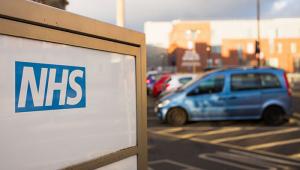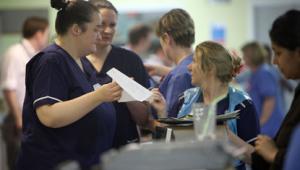Today the charity outlined Conservative, Labour and Liberal Democrat plans all failed to reach even the lowest projection of possible future NHS spending patterns.
This means health spending as a proportion of GDP is set to fall under each of the three main parties’ proposals, according to the Nuffield Trust's analysis.
Sally Gainsbury, senior policy analyst at the charity, said: “We can choose to put more money into the health service, whether that is raised through higher taxes, more borrowing or changing other government spending priorities.
“But equally, not spending more also implies a cost, in terms of longer waits and deteriorating quality of care for patients, and failing to keep up with the latest drugs and medical treatments that may become available in other countries”.
Under previous government plans today’s NHS England budget of £124bn would only increase by 0.75% by 2020 – an average yearly increase of just 0.75% - which would have “significantly constrained” the health service’s ability to provide adequate care.
The charity estimate between £137bn and £155bn would be needed for the NHS by 2022/23 depending on which approach for spending increases were adopted. [Story continues below]
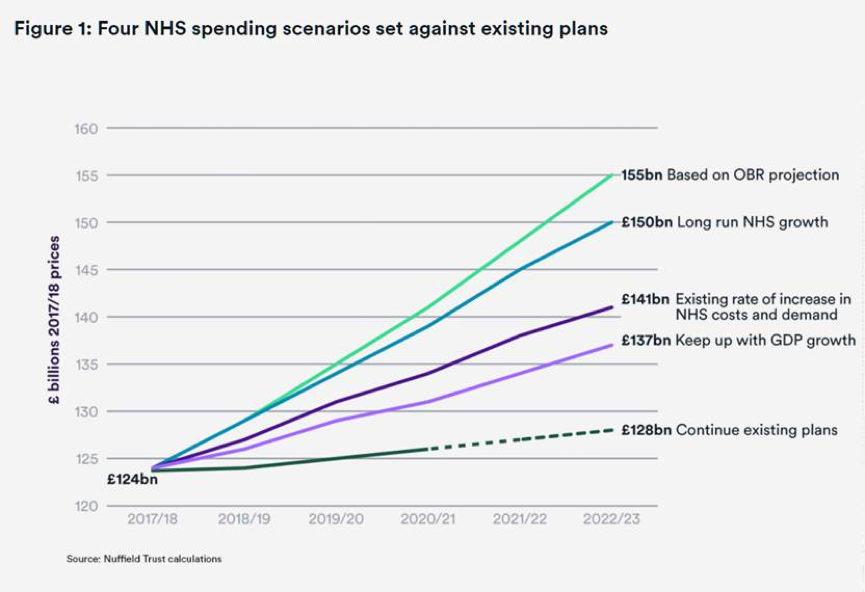
Increasing health spending in line with GDP growth, currently forecast around 2%, a year would require £13bn more in real terms – reaching the lower estimate of £137bn.
Alternatively, if the NHS budget were to keep pace with inflation, predicted demand for care and the removal of the public sector pay cap, offset by some increased productivity it would need to rise to £141bn - £18bn more in real terms – representing an increase of 7.3% to 7.5% of share of GDP by the end of the next parliament.
A third approach looks at the long-term average of funding increases the NHS has received since its inception, between the early 1950s and 2009, the average real terms increase in funding has been around 4% per year.
Recent annual increases have slowed and were set to be only 0.75% between now and 2020, returning to the long-term spending trend would suggest spending of around £150bn in 2022/23 - £27bn more than current spending.
Finally forecasting future spending using the projections for health produced by the independent Office for Budget Responsibility suggest future population increases, patient demand and medical advances, would require spending £155bn by 2022/23, or an extra £31 billion above expenditure this year. [Story continues below]
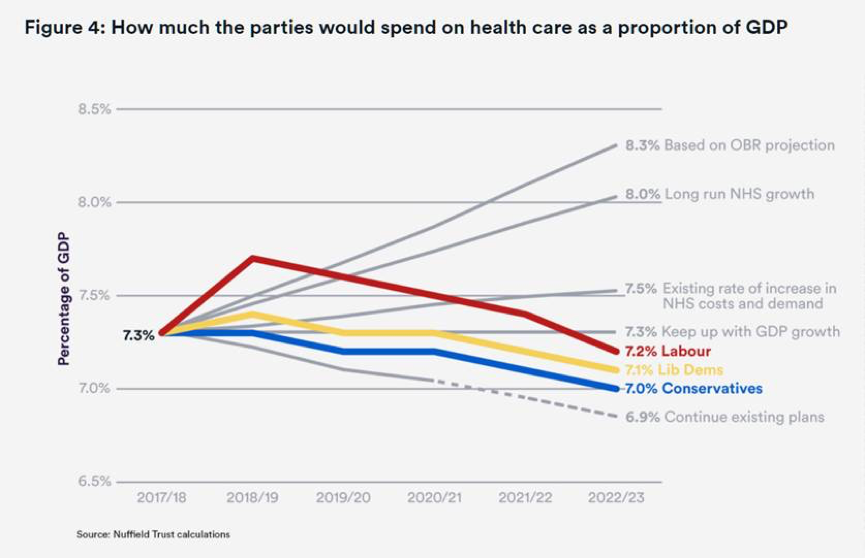
The three main parties’ plans would produce funding settlements which fall short of the aforementioned estimates, the Nuffield Trust report concludes.
The Lib Dems pledge for £6bn a year for both health and social care across England, Wales and Northern Ireland would amount to £132.2bn for the NHS in England by 2022/23.
Labour plans to provide an extra £8bn across the parliament would raise health spending to £135.3bn by 2022/23.
While the Tory promise to increase real terms money for the NHS by at least £8bn could bring the health service budget in England to £131.7bn by the end of the next parliament. [Story continues below]
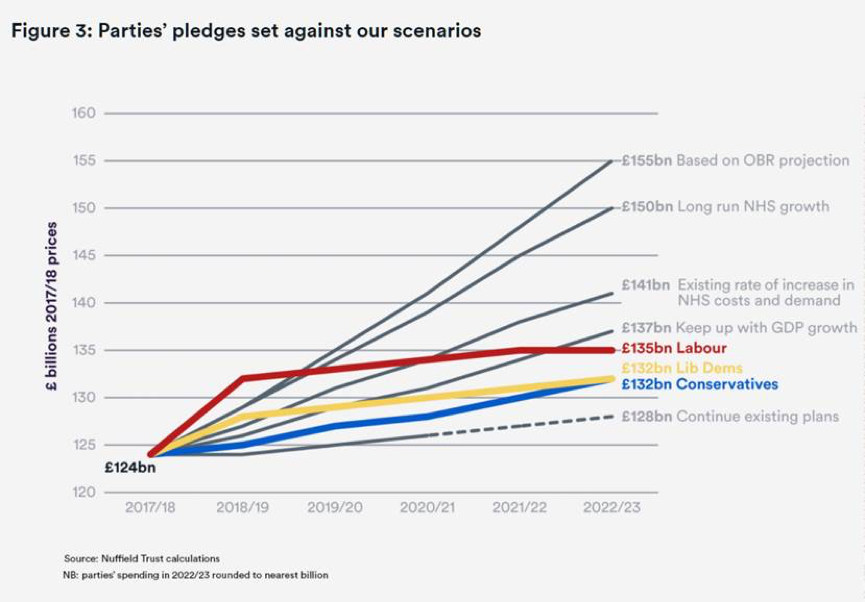
The report states despite the promise of billions extra for the health service the NHS is “set to face a further five years of austerity” whoever forms the next government.
It continues “with NHS spend as a proportion of GDP growth due to fall under all parties’ proposals, whichever party forms the next government will have to face some tough decisions about the future shape of the health service and how it can continue to meet the needs and expectations of its patients and staff.”





